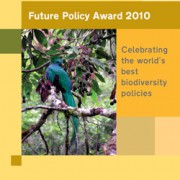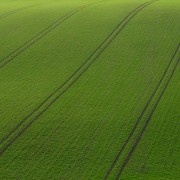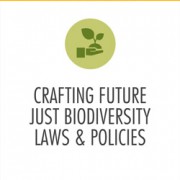Sustainable Biochar
In addition to measures for enriching farmland and pastures with ‘conventional’ organic matter, a potentially important additional option is available in the form of ‘Biochar’. Biochar can be produced by pyrolysis (low-oxygen combustion) of organic materials – forest thinnings, sawdust, agricultural wastes, urban organic wastes or sewage solids – and the resulting charcoal-like substance can be incorporated into farmland as a long term carbon storage option. These are ways of producing ‘sustainable biochar’ as opposed to its production from monoculture tree plantations, which is rightly vigorously opposed by an international coalition of environmental groups.
Use of charcoal as a soil conditioner has ancient origins, and is best documented with reference to the ‘terra preta’ soils found in parts of the Amazon. Much evidence now exists that charcoal was mixed by Amazonian Indian cultivators with food- and human wastes to enrich poor and acidic soils. The predecessors of today’s Amazonian Indians left behind ‘terra preta’ soils rich in organic matter in some 10 per cent of the Amazon territory. Research has shown that charcoal incorporated in this way can last in the soil for hundreds to even thousands of years.
Biochar is a more stable nutrient source than compost and manure. The porous quality of the biochar particles can improve soil structure, and harbours a vast variety and quantity of micro-organisms and associated plant nutrients, enhancing fertility and life in the soil, and also helping it to retain moisture – which is very important in an age of climate change.
By ‘pyrolysing’ one tonne of organic material which contains half a tonne of carbon, about half a tonne of CO2 can be removed from the atmosphere and stored in the soil whilst the other half can be used as a carbon-neutral fuel (this equals a quarter of the CO2 absorbed by the plant during its growth). Biochar has the potential to lock the mineral carbon it contains safely away in the soil for centuries. Professor Johannes Lehmann of Cornell University and others have calculated that biochar applications to soil could remove several billion tonnes of carbon from the atmosphere per year.
Bio-char can be produced from many different organic materials, including sewage and urban biomass. At the sewage works in Bingen, Germany, semi-dried sewage sludge is pyrolysed and turned into black granules: the sewage is turned into charcoal. This can then be buried in farm soil and the carbon it contains can thus be prevented from entering the atmosphere. There is no doubt that the billions of tonnes of sewage and green wastes that accumulate in cities every year, if turned into biochar and buried, could greatly benefit the world’s soils soil as well as the atmosphere.
Incorporation of sustainably produced bio-char could be used to reward farmers as carbon stewards, enabling them to enhance their yields whilst also increasing our ability to deal with climate change.











